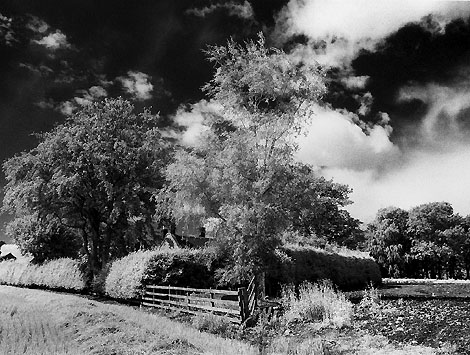
Sara Lloyd of Ilford described the new film as 'near infrared'; the film is not true infrared, but a version of HP5 Plus with extended red sensitivity, originally developed for traffic surveillance cameras. We can blame Ilford for those speeding tickets that drop unexpectedly through the letterbox, at least in Britain. (You can blame the German manufacturers of Robot cameras for the rest of the system, Les - and some people think that Robot is a name found only on historic collectors' pieces! - Ed).
Sara agreed to let me have a few rolls to field-test with the Hoya filter, and it arrived a few days later together with a fact sheet. As the film is on trial at the moment it is not yet openly available, but Ilford expect that it will be available in the next few months, in time for the next 'infrared season' which traditionally starts around May. At present a limited supply is available from Silverprint in London.
SP815T is a high speed infrared film (ISO 400) which, according to the information leaflet, can be pushed up to EI 3200 with no filter and can be processed in a variety of readily available developers. Ilford claim that it has moderate contrast, unlike other infrared films which are generally of high contrast.
I rated the film at EI 400 as suggested by Ilford, but when exposing I bracketed one stop on both sides, and found that all negatives printed satisfactorily. A Hoya R72 Infrared filter was used and we are happy to report that, after a period of several months out of stock, worldwide stockists now have 49mm, 52mm, 55mm, and 58mm sizes.

The view from Les's garden shot on the new Ilford infrared film
I chose to develop SP815T in Ilford's own ID11 at 1:1 for 7 minutes at 24°ree;C. The negatives were all satisfactory and printed well on Ilford Multigrade Fibre grades 3 and 4. When dried, SP815T stays flat unlike Kodak's infrared film which tends to curl when cut into short strips for storage in the negative bags.
Because of the density of the Hoya Red Filter I had some difficulty in seeing the image in the viewfinder, and resorted to using a tripod and framing the photograph without the filter in place. I made my through-the-lens meter reading with the filter fitted, before exposing the film. I exposed SP815T in a variety of lighting conditions but the most dramatic were naturally those shots bright sunlight with foliage. Those exposed in dull light show a full rang of normal tones with no obvious indication that the film is infrared.
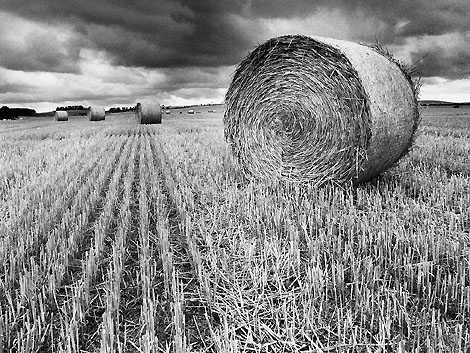
Les's picture in diffuse light without a filter shows that the film can be used for normal tonal results
The grain structure and quality of the final print from this negative gave a print that I felt was acceptable were speed is needed. The grain is clear to see, but not obtrusive, and in the light of the information Ilford supplied I think that it may be worthwhile trying this film as a normal fast film and push it to EI 3200 for low light photography.
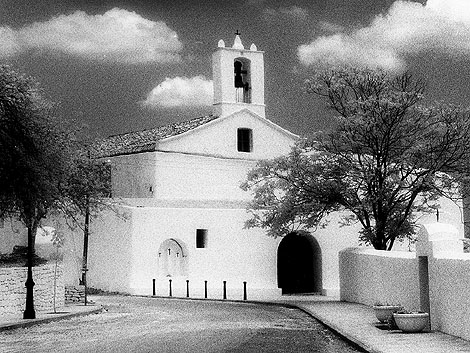
A Kodak infrared image by Roger Noons FRPS, a well-known British exhibitor and printmaker
Ilford has now produced near infrared and have been careful to stress to me that this is not a true infrared product and that it would not produce exactly the same results as the recognised infrared film. When compared to Kodak infrared, the SP815T results are less contrasty and do not show the same spreading or halo effect, but the tonal infrared effect is much the same.
Where trees are sunlit the effect on both films is very similar in terms of contrast. Blue skies with white clouds are noticeably less contrasty on SP815T, but I have always felt that the contrast produced by normal infrared is too harsh. The contrast of SP815T can quite easily be increased if you want by giving a little extra development.
In my view the most significant difference between SP815T and other infrared films is in the grain structure. Whilst there is more grain than in standard HP5 Plus, SP815T shows a relatively fine grain when compared to the very coarse grain of its Kodak counterpart, more comparable to the Konica material, but crisper.
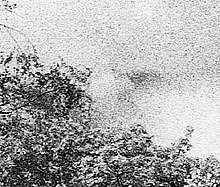
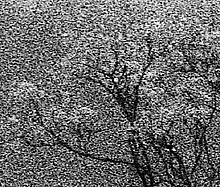
Left: grain from the new film. Right: identical magnification from Roger Noons's Kodak infrared film shot.
Clearly, infrared photography has certain limitations and is unlikely to be in huge demand, but as a creative tool it can be a very exciting. SP815T is a versatile film which can be used to tackle a wide range of tasks, from near infrared creative work to catching your car speeding down the motorway.
In my view its relatively fine grain is a big bonus and with a little darkroom manipulation the infrared effect can be the same as the more widely-known Kodak product but without the coarseness. There is room in the market place for another infrared film, and should Ilford make the effort to advertise this product widely, and make it more easily available than other infrared films, then I feel that they could pick up a big share of that small market.